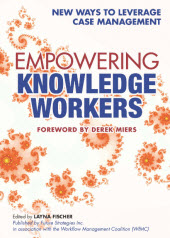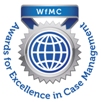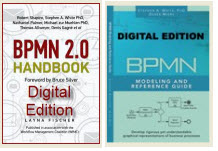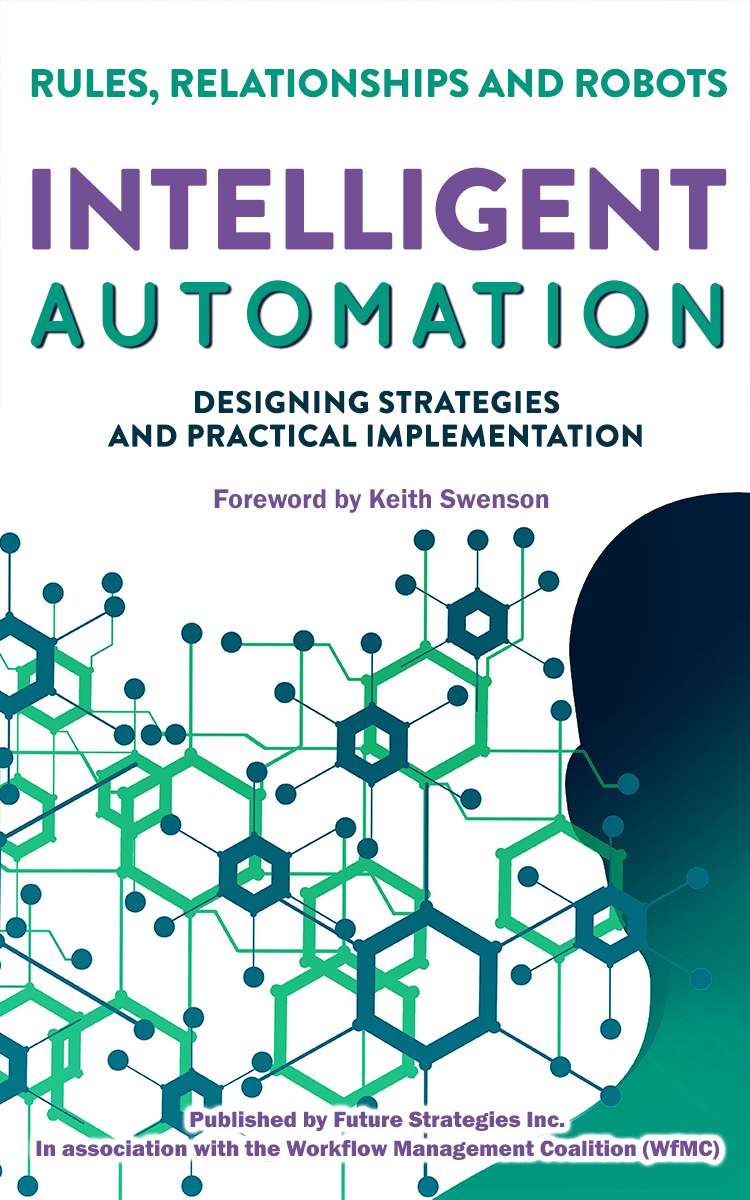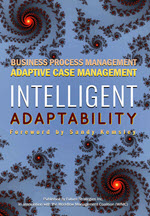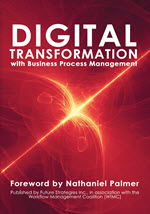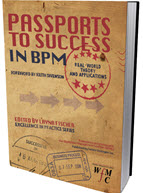2005 Workflow Handbook
Retail $95.00. Pay only $25.00
Available in both printed and digital editions. Download the complete book, save time and shipping charges.
2005 Workflow Handbook (Digital Edition)
Download now
Supplied in PDF format within a zip file. Size: 5MB zipped
ORDER FORM
The Workflow Handbook 2005
Published in association with the Workflow Management Coalition (WfMC)
Edited by Layna Fischer
Quality hardcover. 284 pages.
US $95.00 Retail.
Size: 7" x 10"
ISBN 0-9703509-8-8
Illustrations, charts, references, appendices, bibliography, index.
Published by:
Future Strategies Inc.,
Lighthouse Point, FL, USA.
Welcome to the Workflow Handbook 2005. This edition offers you three sections:
·
SECTION 1:
The World of Workflow: covers a wide spectrum of viewpoints and discussions by experts in their respective fields. Papers range from an examination of the real Management of Business Process through to metrics and Web Services workflow architectures.
· SECTION 2: Workflow Standards:The section on Workflow Standards deals with the importance of standards, with an updated Wf-XML 2.0 Cookbook with new schemas and examples . A detailed example of using BPMN to Model a BPEL Process is provided together with comprehensive comparison of XML Interchange Formats for Business Process Modeling
· SECTION 3: Directory and Appendices—an explanation of the structure of the Workflow Management Coalition and references comprise the last section including a membership directory.
ORDER FORM
DOWNLOAD A FREE CHAPTER:
BPM—Too Much BP, Not Enough of the M
Derek Miers, Enix Consulting, United Kingdom
The problem with many BPM deployments is that they often overlook the reason why this technology is needed in the first place—to support the achievement of business objectives. The re-emergence of business processes as a core discipline in modern business management is fairly clear. But in order to really derive the maximum benefit from BPM initiatives, firms need to manage the people interface more carefully.
CONTENTS
Foreword
Jon Pyke, Chair WfMC
Introduction (read short descriptions of each chapter)
Layna Fischer, Executive Director, Workflow Management Coalition, United States
SECTION 1—THE WORLD OF WORKFLOW
Workflow in the world of BPM: Are they the same?
Charlie Plesums, WfMC Fellow, United States
BPM—Too Much BP, Not Enough of the M
Derek Miers, Enix Consulting, United Kingdom
Chris Lawrence, Old Mutual, South Africa
Business Activity Monitoring and Simulation
Joseph M. DeFee, CACI and Paul Harmon, Business Process Trends, United States
Business Process Improvement through Optimization of its Structural Properties
Vladimír Modrák, Technical University of Košice, Slovakia
Enhancing and Extending ERP Performance with an Automated Workflow System
Robert J. Kearney, Image Integration Systems, Inc., USA
Narrowing the Semantic Gap between Business Process Analysis and Business Process Execution
Dr. Setrag Khoshafian, Pegasystems Inc., USA
Zachary B. Wheeler, Roberta Bortolotti, SDDM Technology, United States
Workflow and Business Rules–a Common Approach
Heinz Lienhard and Urs-Martin Künzi, ivyTeam-SORECOGroup, Switzerland
State of BPM Adoption in Asia
Ken Loke, Bizmann System (S) Pte Ltd., and Dr. Pallab Saha,, Institute of Systems Science, National University of Singapore
SECTION 2—WORKFLOW STANDARDS
Business Process Metamodels and Services
Jean-Jacques Dubray, Attachmate, United States
Workflow and Service-Oriented Architecture (SOA)
Arnaud Bezancon, Advantys, France
A Comparison of XML Interchange Formats for Business Process Modelling
Jan Mendling and Gustaf Neumann, Vienna University of Economics and Business Administration; and Markus Nüttgens, Hamburg University of Economics and Politics
How to Measure the Control-flow Complexity of Web Processes and Workflows
Jorge Cardoso, Department of Mathematics and Engineering, University of Madeira, Portugal
An Example of Using BPMN to Model a BPEL Process
Dr. Stephen A. White, IBM Corp., United States
A Simple and Efficient Algorithm for Verifying Workflow Graphs
Sinnakkrishnan Perumal and Ambuj Mahanti, Indian Institute of Management Calcutta, India
Keith D Swenson, Fujitsu Software Corporation, United States
This paper is for those who have a process engine of some sort, and wish to implement a Wf-XML interface. At first, this may seem like a daunting task because the specifications are thick and formal. But, as you will see, the basic capability can be implemented quickly and easily. This paper will take you through the basics of what you need to know in order to quickly set up a foundation and demonstrate the most essential functions. The rest of the functionality can rest on this foundation. The approach is to do a small part of the implementation in order to understand how your particular process engine will fit with the protocol.
SECTION 3—DIRECTORIES AND APPENDICES
WfMC Structure and Membership Information
Appendix—Author Biographies
Appendix—Membership Directory
Appendix-Officers and Fellows
Index
Other Resources
ORDER FORM |

